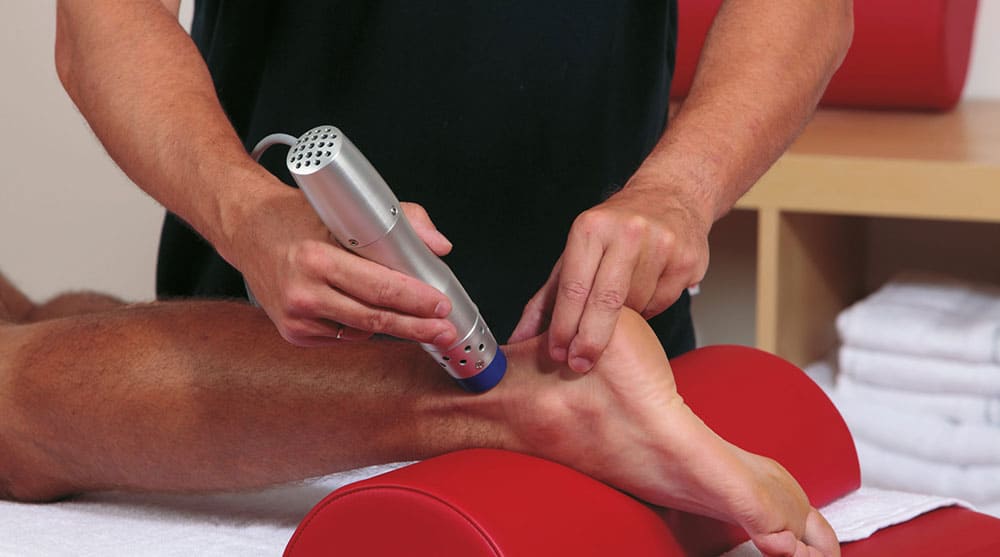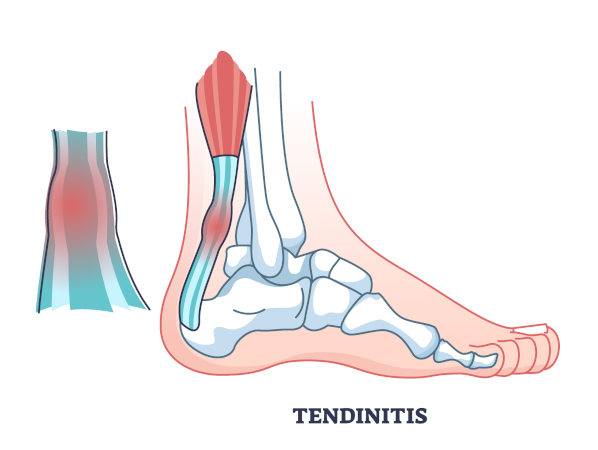- Home
- Advanced Treatments
- PARS for Achilles Rupture
Percutaneous Achilles Repair System (PARS)
- Published 6/1/2018
- Last Reviewed 2/8/2024
The Achilles, a thick tendon in the back of your ankle, connects the calf muscles to your heel bone. Often medically referred to as the calcaneal tendon, the Achilles is essential for running, walking, jumping, and any form of movement in which you must push off from the ground.
An Achilles tendon injury can greatly impair movement, and the most severe injuries, such as a torn tendon, can necessitate surgery.
If non-surgical treatment is not an option, and you require Achilles tendon surgery, you may want to consider the PARS procedure.
- What is the PARS procedure for Achilles rupture repair?
- What are the benefits of the PARS procedure?
- How does PARS compare to traditional "open repair" surgery?
- UFAI PARS Yelp Patient Review, in her own words...
- Why choose the minimally invasive PARS surgery?
- What to expect during recovery for Achilles surgery
- Why UFAI is your best choice for Achilles tendon treatment
- Achilles tendon surgery FAQs
- How are Achilles tendon tears diagnosed?
- Can tendon surgery cause nerve damage?
- Can acute Achilles tendon rupture (ATR) cause a blood clot?
-
Foot and Ankle Surgeon and Co-Director of University Foot and Ankle Institute
Board-Certified Podiatric Foot and Ankle Specialist, Dr. Gary Briskin, DPM, FACFAS, began his medical training by serving a residency at Flint General Hospital in Michigan. Once completed, he established a practice in Century City Hospital, where he soon became chief of podiatric surgery.
Dr. Briskin is a Diplomat of the American Board of Podiatric Surgery and a Fellow of the American College of Foot and Ankle Surgeons. He also serves as an assistant clinical professor at the UCLA School of Medicine and is co-founder and co-director of University Foot and Ankle Institute.
Achilles Tendon Articles from Our Blog
- An Inside Look at Shockwave Therapy for Heel Pain, now available in Valencia, CA
- Avoiding Foot and Ankle Overuse Injuries While Dog Walking
- How Carrying Extra Weight Affects Your Feet and Ankles
- What's Plantar Tendonitis and Why is it Still a "Medical Mystery"?
- Got Plantar Fasciitis or Achilles Tendonitis? Could PRP, Amniox Stem Cells or Cortisone Answer Your Pain Relief Prayers?
- Your Lower Back Pain May Be Caused By How You Walk
- Common Prescriptions and OTC Medications That Affect Your Feet and Certain Foot and Ankle Conditions
- Achilles Tendinitis Treatment Do’s and Don’ts
- Beat the 6 Most Common Walking Pains
 After over 3 years of relentless research and visiting over 10 different board-certified orthopedic surgeons, podiatrists, phys...Justin P.
After over 3 years of relentless research and visiting over 10 different board-certified orthopedic surgeons, podiatrists, phys...Justin P. Good diagnostics and explanation. Both Dr and staff meet my first 5 minute rule.Alvin L.
Good diagnostics and explanation. Both Dr and staff meet my first 5 minute rule.Alvin L. Incredible experience with doctor Kelman! Our 13 year old was very comfortable and we will recommend to others.Amanda M.
Incredible experience with doctor Kelman! Our 13 year old was very comfortable and we will recommend to others.Amanda M. The very Best!Antoinette O.
The very Best!Antoinette O. Very satisfiedJay G.
Very satisfiedJay G. Just Thank you! All is always the best services . Highly recommend.Ingrid F.
Just Thank you! All is always the best services . Highly recommend.Ingrid F. Excellent people. Excellent care.Bradley S.
Excellent people. Excellent care.Bradley S. The personal me trata con respeto mi doctor está tratando de que aser lo mejor para mi perdona graciasArmando T.
The personal me trata con respeto mi doctor está tratando de que aser lo mejor para mi perdona graciasArmando T. Dr. Braxton Little, my podiatrist, was very professional, diagnosed me with plantar's faciitis
Dr. Braxton Little, my podiatrist, was very professional, diagnosed me with plantar's faciitis
and then made a set of orthotics...Karen B. 100% satisfiedJames R.
100% satisfiedJames R. Hate these surveys.Rebecca A.
Hate these surveys.Rebecca A. Dr. Nalbandian provided a good understanding of my options and will follow up in 3 months to see how I am doing and what I shou...William B.
Dr. Nalbandian provided a good understanding of my options and will follow up in 3 months to see how I am doing and what I shou...William B.
-
 Listen Now
Avoiding Foot and Ankle Overuse Injuries While Dog Walking
Read More
Listen Now
Avoiding Foot and Ankle Overuse Injuries While Dog Walking
Read More
-
 Listen Now
Beat the 6 Most Common Walking Pains
Read More
Listen Now
Beat the 6 Most Common Walking Pains
Read More
-
 Listen Now
How Carrying Extra Weight Affects Your Feet and Ankles
Read More
Listen Now
How Carrying Extra Weight Affects Your Feet and Ankles
Read More
-
 Listen Now
Your Lower Back Pain May Be Caused By How You Walk
Read More
Listen Now
Your Lower Back Pain May Be Caused By How You Walk
Read More
-
 Got Plantar Fasciitis or Achilles Tendonitis? Could PRP, Amniox Stem Cells or Cortisone Answer Your Pain Relief Prayers?
Read More
Got Plantar Fasciitis or Achilles Tendonitis? Could PRP, Amniox Stem Cells or Cortisone Answer Your Pain Relief Prayers?
Read More
-
 Listen Now
Common Prescriptions and OTC Medications That Affect Your Feet and Certain Foot and Ankle Conditions
Read More
Listen Now
Common Prescriptions and OTC Medications That Affect Your Feet and Certain Foot and Ankle Conditions
Read More
-
 Listen Now
An Inside Look at Shockwave Therapy for Heel Pain, now available in Valencia, CA
Read More
Listen Now
An Inside Look at Shockwave Therapy for Heel Pain, now available in Valencia, CA
Read More
-
 Achilles Tendinitis Treatment Do’s and Don’ts
Read More
Achilles Tendinitis Treatment Do’s and Don’ts
Read More
-
 Listen Now
What's Plantar Tendonitis and Why is it Still a "Medical Mystery"?
Read More
Listen Now
What's Plantar Tendonitis and Why is it Still a "Medical Mystery"?
Read More











